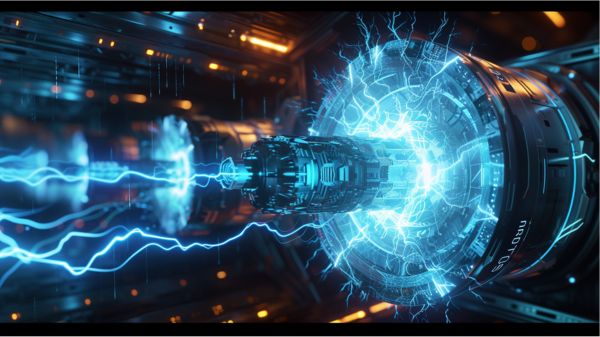
Building your own alternator permanent magnet generator is like unlocking a hidden treasure within a car alternator. With a few simple steps, you can transform this ordinary device into a powerful brushless motor or generator that holds immense potential.
Imagine harnessing the power of neodymium magnets and the precision of a lathe machine to create a marvel of engineering. But how exactly can you accomplish this feat? Stay tuned as we delve into the process, guiding you through each step to help you unlock the secrets of building your own alternator permanent magnet generator.
To understand the basics of building an alternator permanent magnet generator, you need to grasp the principles of magnetic fields and electrical induction in generator operation. Permanent magnet generators utilize the power of magnets to generate electrical power without the need for external excitation. This makes them more efficient and compact compared to traditional generators.
The key to building an efficient permanent magnet generator lies in understanding magnet strength, rotor design, and coil configuration. The magnets used in these generators should have a strong magnetic field to ensure maximum power output. Additionally, the rotor design should be optimized to enhance the interaction between the magnets and the coils, while the coil configuration should be carefully chosen to induce a strong electrical current.
You’ll need to gather the necessary materials for assembling the modified alternator into a brushless motor or generator.
To create a powerful brushless motor, you’ll require neodymium magnets for constructing a permanent magnet rotor. These magnets are crucial for generating the magnetic field needed for efficient operation.
Additionally, you’ll need wires, connectors, and various metal parts to assemble the modified alternator. A brushless speed controller is essential for controlling the motor’s speed and ensuring optimal performance.
It’s also important to have the necessary tools, such as a lathe machine, drill press, and angle grinder, to facilitate the construction process.
Lastly, don’t forget to have a 12v car alternator, which will serve as the foundation for your project.
After gathering the necessary materials, the next step in building an alternator permanent magnet generator is to disassemble the alternator.
Begin by removing the pulley and fan using appropriate tools. Carefully detach the front and rear covers of the alternator to access the internal components. Follow the manufacturer’s disassembly instructions to extract the rotor assembly from the housing.
Identify and disconnect the electrical connections leading to the stator coils within the alternator. Ensure all components are safely removed and set aside for further modification and conversion into a permanent magnet generator.
To help you visualize the disassembling process, refer to the table below:
| Step | Procedure | Tools Required |
|---|---|---|
| 1 | Remove pulley and fan | Wrench |
| 2 | Detach front and rear covers | Screwdriver |
| 3 | Extract rotor assembly | Manufacturer’s instructions |
| 4 | Disconnect electrical connections | Pliers |
The construction of the permanent magnet rotor is a critical step in transforming the car alternator into a powerful and efficient brushless motor or generator. Here are four key aspects to consider when building the permanent magnet rotor:
To assemble the generator components, carefully construct the permanent magnet rotor using 24 neodymium magnets paired for increased power output. Secure the magnets on the rotor using super glue, nylon wire, and epoxy to ensure stability during operation.
Thread the rotor onto a 10mm rod with nuts and washers for proper alignment and support. Next, configure the coils in a delta configuration for AC output and set up the 6 output wires for the generator.
Make sure to test the voltage and current output using a multimeter to ensure peak performance of up to 64 amps per phase. By following these steps, you can create an alternator permanent magnet generator that can produce watts of power and efficiently convert mechanical energy into AC power.
Alternators do not use permanent magnets because they lack the flexibility and adjustability required for voltage regulation. Electromagnets in alternators allow for control of the magnetic field, meeting varying electrical demands.
Yes, you can build a magnet powered generator. It has advantages like being more efficient and compact. However, it also has disadvantages such as the initial cost and the need for precise magnet placement.
Yes, a permanent magnet motor can be used as a generator. It has advantages such as efficient electricity production and the ability to provide a sustainable source of power. However, it also has limitations that need to be considered.
Generators don’t use permanent magnets due to limitations in producing high magnetic fields. Alternators with electromagnets offer advantages in voltage regulation and power output control. Permanent magnets can pose challenges in these areas.
By repurposing a car alternator and following the steps outlined, you can successfully build your own alternator permanent magnet generator. This project requires careful disassembly, construction of a permanent magnet rotor, and precise reassembly.
By harnessing the power of neodymium magnets and utilizing the modified alternator, you can create a powerful brushless motor or generator. Remember, with a little technical know-how and the right materials, you can generate your own sustainable energy.